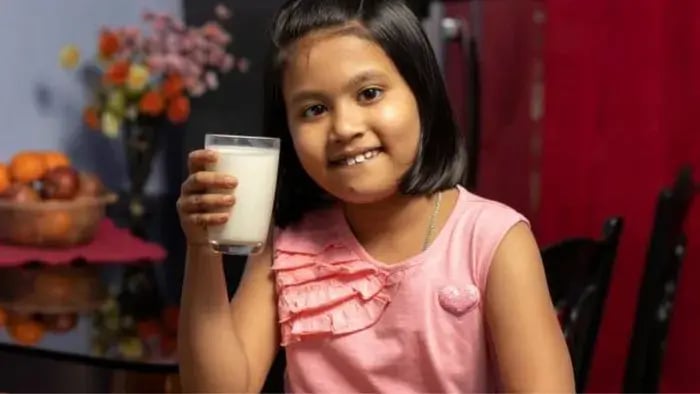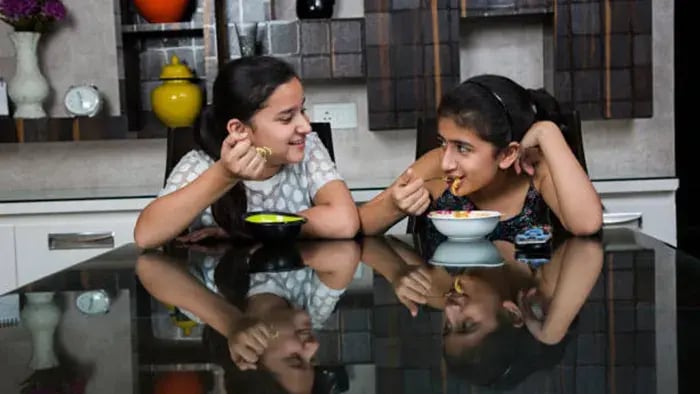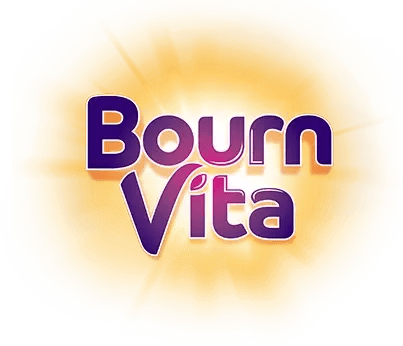- Moong Dal Chilla
- Vegetable Stuffed Paratha
- Mixed Vegetable Pulao with Brown Rice
- Fruit and Chia Seed Yogurt Bowl
- Vegetable Upma with Millet (Ragi/Samai)
- Rajma Masala with Brown Rice or Multigrain Roti
- Oats Idli
Introduction
Growing kids need the right nutrition to stay active, focused, and healthy, and fiber is a big part of that. It helps with digestion and keeps them full for longer, which means fewer cravings for junk food between meals. For parents, the good news is that many everyday kitchen ingredients are already high in fiber. From simple dals and rotis to fruits like guava and bananas, fiber can be added naturally in kid-friendly ways.

Think moong dal chillas, stuffed parathas with vegetables, or even a fruit bowl with papaya, chikoo, and pomegranate. When served in colorful combinations, high fiber meals can become their favorite. Fiber also helps with regular bowel movements, reduces the risk of constipation, and improves long-term gut health, which is essential for every growing child.
The key is to mix variety with balance, introducing high-fiber foods early not only boosts nutrition but also builds lifelong eating habits. And with so many tasty Indian options available, it’s easy to fill their plate with both flavor and goodness.
7 Indian Recipes for Kids: High Fiber and Yummy Ideas

Fiber is a must for a child’s daily diet. It aids digestion, prevents constipation, promotes satiety, and helps in maintaining energy levels throughout the day. The key is to make them in ways that are visually appealing and familiar in taste. Here are 9 Indian recipes that combine taste and nutrition so your child gets more fiber without fuss or complaints.
Moong Dal Chilla
Moong dal chilla is made by soaking and blending yellow moong dal into a smooth paste, then regular spices are added and pan-cooked like a dosa or pancake. According to Eat Right India, it is light on the stomach, easy to chew, and naturally high in fiber. You can add grated carrots, chopped spinach, or beetroot to increase the nutritional value and color. Serve with green chutney or a small bowl of curd to make a balanced fiber-rich meal that works for breakfast, lunchboxes, or evening snacks.
Vegetable Stuffed Paratha
As per the Dietary Guidelines for Indians, whole wheat parathas stuffed with mashed and seasoned vegetables like cauliflower, peas, potatoes, or methi make a high-fiber meal. Since parathas are already a part of many kids’ daily diets, this is a great way to increase their nutrition without changing the format. To make it enjoyable for kids, you can serve it with homemade curd, a small piece of jaggery, or even tomato ketchup.
Mixed Vegetable Pulao with Brown Rice
Study conducted by, Foods. 2023, suggests that by switching to brown rice, you increase the fiber content of a simple vegetable pulao. Add seasonal vegetables like carrots, beans, corn, or peas and cook with a bit of ghee and mild spices to enhance the aroma and flavor. Brown rice has more fiber and keeps your child full for longer. This is easy to make and works for lunch or dinner, especially with curd or dal.
Fruit and Chia Seed Yogurt Bowl
This refreshing bowl combines fiber-rich fruits like apples or papayas with unsweetened yogurt and a spoonful of chia seeds. Research conducted by Food Sci Nutr. 2022, states that, chia seeds swell up when soaked and are easy to digest, providing both soluble fiber and omega-3 fatty acids. This can be served for breakfast, as a mid-morning snack, or even as a healthy dessert after meals.
Vegetable Upma with Millet (Ragi/Samai)
Traditional upma is made with semolina, but according to FSSAI, switching to millets like ragi or samai increases the fiber, protein, and mineral content. Add chopped vegetables like capsicum, carrots, peas, and onions to make it more nutritious. Cook the mixture with curry leaves, mustard seeds, and a hint of lemon for flavour. This is soft, easy to eat, and perfect for breakfast or lunchboxes. Millets also regulate blood sugar and keep kids full for longer.
Rajma Masala with Brown Rice or Multigrain Roti
As per the CCRH, rajma (kidney beans) is rich in both fiber and iron, and when cooked in a tomato-based masala and served with brown rice or multigrain roti, it makes for a nutritious and filling meal. This combination not only improves digestion but also provides long-lasting energy, making it perfect for growing children. If your child finds the texture too tough, you can gently mash the rajma to make it easier to eat without losing its fiber content.
Oats Idli
Oats idli is a fusion of traditional steamed idlis with the goodness of oats and grated vegetables. Mix oats with curd, add a tempering of mustard seeds and curry leaves, and steam the batter as you would regular idlis. These are soft, tasty, and nutritious. You can serve with coconut chutney or sambar. According to a study published in, J Food Sci Technol. 2013, oats provide soluble fiber, which supports digestion and helps maintain stable energy levels throughout the school day.
Conclusion

Adding high-fiber foods to your child’s daily meals is one of the simplest ways to boost their overall health. These dishes are not only wholesome but also delicious and easy to prepare, making mealtimes both nutritious and enjoyable. From soft rotis and dals to crunchy snacks and colorful veggie mixes, each option supports digestion, energy, and long-term wellness.
Her love for storytelling began with reading her grandfather’s speeches, where Tarishi saw the power of words in creating lasting memories. Combining her passions for food and writing, she has turned her life into a fulfilling path of sharing stories that celebrate flavours and how food brings communities together.
The views expressed are that of the expert alone.
The information provided in this content is for informational purposes only and should not be considered a substitute for professional medical advice, diagnosis, or treatment. Always seek the advice of your physician or another qualified healthcare provider before making any significant changes to your diet, exercise, or medication routines.
References
https://pmc.ncbi.nlm.nih.gov/articles/PMC4325078/
https://fssai.gov.in/upload/EATRIGHTINDIA/Standards.pdf
https://www.ccrhindia.nic.in/WriteReadData/LINKS/Compendium0c3fc504-fd77-45ab-9148-2407a787276c.pdf
https://pmc.ncbi.nlm.nih.gov/articles/PMC9834868/
https://pmc.ncbi.nlm.nih.gov/articles/PMC9957187/
https://www.nin.res.in/downloads/DietaryGuidelinesforNINwebsite.pdf
















